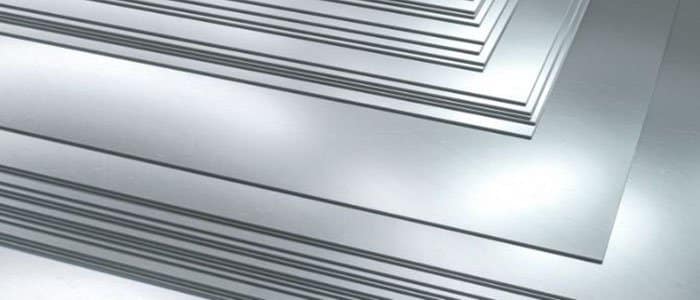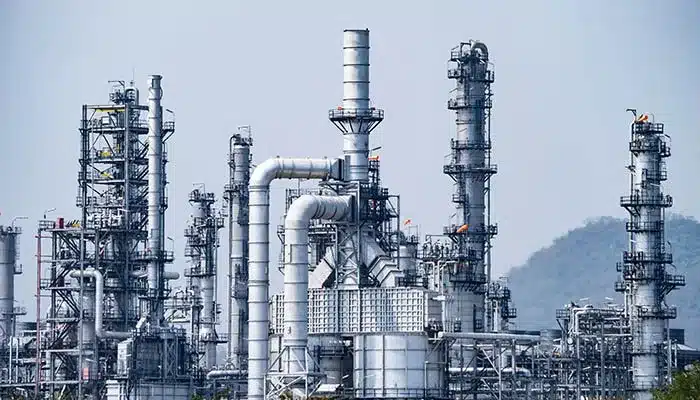In the world of high-performance nickel-based alloys, Hastelloy and Inconel are two of the most discussed materials. For engineers, procurement managers, and material scientists in sectors like chemical processing, aerospace, and energy, selecting the correct alloy is a critical decision.
While both materials offer strong performance, they serve different purposes. Using the wrong one can lead to part failure, costly downtime, and safety risks.
This guide compares Hastelloy and Inconel. It gives you the information you need to make a smart choice for your next project.
What is Inconel?
Inconel is a family of nickel-chromium-based alloys recognized for their high-temperature strength and oxidation resistance. The name originates from the International Nickel Company.
Key Characteristics of Inconel:
- High-Temperature Strength:Inconel keeps its structural integrity at extreme temperatures where many metals would creep or deform.
- Oxidation Resistance:Its high chromium content forms a stable, passive oxide layer that protects the material from oxidizing in high-heat environments.
- Good Corrosion Resistance:It provides solid resistance to various corrosive media, but its main advantage is performance under high-temperature oxidation.
Common Inconel Grades:
- Inconel 625:A widely used grade known for its strength, toughness, and resistance to a broad range of corrosive environments, including seawater.
- Inconel 718:A precipitation-hardening alloy valued for its high strength at temperatures up to 1300°F (700°C).
What is Hastelloy?
Hastelloy is the trademark for a range of nickel-molybdenum alloys from Haynes International. Its primary feature is strong resistance to a wide spectrum of corrosive environments.
Key Characteristics of Hastelloy:
- Exceptional Corrosion Resistance:This is its main advantage. Hastelloy resists aggressive chemicals, including strong acids, chlorides, and reducing environments.
- Versatility:Different Hastelloy grades target specific chemical challenges, offering solutions for the chemical processing and pharmaceutical industries.
- Good High-Temperature Performance:While not as strong as some Inconel grades at the highest temperatures, many Hastelloy alloys perform well in combined high-temperature and corrosive conditions.
Common Hastelloy Grades:
- Hastelloy C-276:One of the most versatile corrosion-resistant alloys. It works well in both oxidizing and reducing environments and resists pitting and crevice corrosion.
- Hastelloy C-4:Offers good thermal stability and resistance to stress-corrosion cracking.
Direct Comparison: Hastelloy vs Inconel
The table below outlines the main differences between the two alloy families.
| Feature | Inconel (e.g., 625, 718) | Hastelloy (e.g., C-276, C-4) |
| Primary Strength | High-Temperature Strength & Oxidation Resistance | Exceptional Corrosion Resistance |
| Key Alloying Elements | Nickel, Chromium, Iron, Molybdenum, Niobium | Nickel, Molybdenum, Chromium, Tungsten |
| Corrosion Resistance | Good, especially to oxidation and seawater. | Superior, especially to strong acids, chlorides, and localized corrosion. |
| High-Temperature Performance | Excellent. Maintains strength and resists creep at very high temperatures. | Very good, but generally outperformed by specialized Inconel grades at peak temperatures. |
| Weldability | Generally good, but requires specific procedures. | Excellent, especially grades like C-276 and C-4. |
| Cost | High | Typically higher than Inconel. |
Application Showdown: Where Each Alloy Excels
The theoretical differences become clear when we look at where these materials are actually used. The choice is almost always dictated by the primary environmental challenge: heat or chemicals.
Inconel in Action: High temperature environment
Inconel is the material of choice when thermal stress is the main concern.
- Aerospace & Turbines:Inconel 718 is standard for jet engine turbine blades, discs, and combustion chambers. Its ability to withstand immense centrifugal forces and temperatures is critical for safety and performance.
- Heat Treatment Equipment:Furnace components, such as baskets, trays, and retorts, are often made from Inconel. They resist warping and scaling during repeated heating and cooling cycles.
- Automotive & Motorsports:Inconel is used for high-performance exhaust systems and turbocharger components where temperatures can exceed 1000°C.
- Nuclear Reactors:Control rod and spacer grid components benefit from Inconel’s strength and resistance to high-temperature water corrosion.
Hastelloy in Action: Highly corrosive environment
Hastelloy is specified when the environment will chemically degrade lesser materials.
- Chemical Processing:This is Hastelloy’s home turf. Reactors, vessels, and piping for producing or handl ing strong acids (sulfuric, hydrochloric), chlorine, and solvents frequently use Hastelloy C-276.
- Pollution Control:Flue-gas desulfurization (FGD) systems in power plants use Hastelloy to resist the highly corrosive mix of sulfuric acid and chlorides found in scrubbers.
- Pharmaceuticals:The purity and corrosion resistance of Hastelloy make it ideal for equipment that comes into contact with reactive pharmaceutical ingredients and cleaning agents.
- Pulp and Paper:Digesters and bleach plants use Hastelloy components to withstand the aggressive chemicals used to break down wood pulp.
Conclusion: How to choose
Hastelloy and Inconel alloys are similarly priced. Before choosing the appropriate alloy material, it’s crucial to first identify the primary environmental factors of your project. If your project requires continuous operation in a high-temperature environment, Inconel alloy is recommended as the first choice. If your project needs to operate in a highly corrosive environment, such as in chemical processing applications, Hastelloy is the preferred choice.
Daxun Alloy Co., Ltd., as an alloy supplier with many years of experience, can supply both Hastelloy and Inconel alloys to customers worldwide. If you have purchasing needs, contact our metal experts immediately for the best service.




